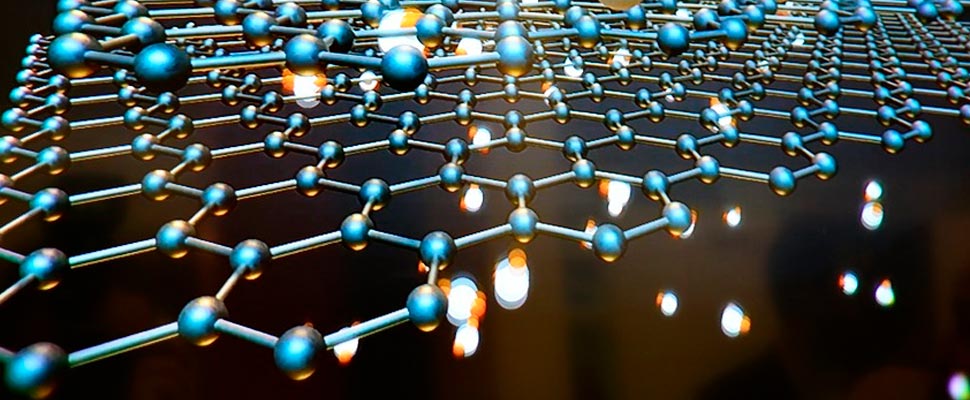Everything you need to know about graphene
It comes from the already recognized carbon, however, its characteristics of resistance, flexibility, and lightness make it a quite promising material, especially in the technology industry.

Graphene has become an important material within the technology industry. / Photo: Pixabay
LatinAmerican Post | Juan Manuel Bacallado
Listen to this article
Leer en español: Todo lo que debes saber sobre el grafeno
Graphene is a material from carbon, with a different molecular structure, like other materials such as graphite (commonly used in pencil tips) or diamond. In fact, Graphenano reviews that a millimeter of graphite is made up of three million sheets of graphene, this shows that graphene is a fairly fine material, since it is formed with a single layer of carbon atoms. In addition, graphene has a hexagonal structure, similar to that of the interior of a honeycomb, improving its functionality.
What is incredible about this material?
Graphene has far surpassed other fairly common materials such as steel, because according to La Vanguardia, graphene is between 100 and 300 times stronger than steel. It would be believed that due to its superior resistance to steel it would make it heavy, but quite the opposite, a graphene sheet with 1 square meter in size weighs only 0.77 milligrams.
And although it seems crazy, this weight is due to the fact that graphene can be a thousand times thinner than a human hair; however, it is still harder than diamond, and as we know, a pure diamond can only be scratched with another diamond. This allows us to have a notion of the hardness of graphene.
Altavoces de grafeno, que no usan vibraciones sino calor para producir sonido de calidad https://t.co/4y4pN236Nu pic.twitter.com/PTEPdHNQWs
— omicrono (@Omicrono) May 5, 2017
Graphene's thin, two-dimensional structure also supports flexibility, being able to bend 20% without breaking, according to Graphenano. Regarding its color, graphene is crystalline.
On the other hand, it is a good conductor of current and heat, since it does not overheat when receiving intense currents and manages to dissipate heat. In addition, graphene is quite dense and waterproof and it is pure carbon. All these characteristics make it a material with various applications.
It may interest you: Is it possible to live in a world without plastic?
Graphene is relatively new, as the first time it was mined was in 2004, when scientists from the University of Manchester, Andre Geim and Kotsya Novoselov obtained a layer of graphene with a sticky tape peeled off a piece of carbon. This experiment awarded them the Nobel Prize in Physics in 2010, according to La Vanguardia.
Some applications
Graphene's beneficial properties make it applicable in many areas. For example, the International University of Valencia (VIU) explains that it could be used in biological engineering, to make bioelectric sensory devices.
Due to its efficient electrical conductivity, it would send fast signals to control glucose, cholesterol or hemoglobin levels, and even a DNA sequence. On the other hand, its strength and lightness makes it possible for graphene to combine with other materials to replace metals and build much lighter planes, spaceships and even vehicles with the same durability and better response to electrical storms.
La startup catalana Earthdas crea una batería de grafeno que puede cargar bicicletas eléctricas en cinco minutoshttps://t.co/6PibSKKG5U pic.twitter.com/SgLowUQYQG
— elEconomista.es (@elEconomistaes) April 8, 2018
The density of graphene is capable of preventing the passage of a gas as light as helium, therefore it is applicable in filtration systems. The VIU reports that scientists have managed to make graphene filters with 5-nanometer pores, much smaller than current aluminum oxide filters that reach 30 nanometers. This functionality would serve for more efficient water filters and desalination.
In medicine, according to La Información, it would be possible to create graphene chips to be inserted into people's brains and detect chemical disorders quickly, such as knowing an epileptic attack before it happens.
In the world of technology, graphene is already used in components of electronic devices such as televisions and smartphones, as well as in speakers and headphones to optimize sound quality.
Also read: Engendering trust in an AI world
But…
The use of graphene sounds pretty good, however, this "material of the future" is still not seen massively on devices. This is because there are still no factories that produce it in large quantities, nor is there a world standard for its production, as there is in other metals and plastics. In addition, there are still scientists working on the conductivity of electricity that graphene has, since unlike materials like silicon, there is no way to stop the flow of energy through graphene.
According to Computer Hoy, the reason that graphene is not mass-produced is that its characteristics are only fulfilled if it is made of the highest quality, which makes it poorly accessible despite being abundant. This refining process makes it expensive, approximately US$ 50 per gram wholesale. However, a large part of companies already think about the use of this material, so they work so that in the future their products can be complemented with graphene.




